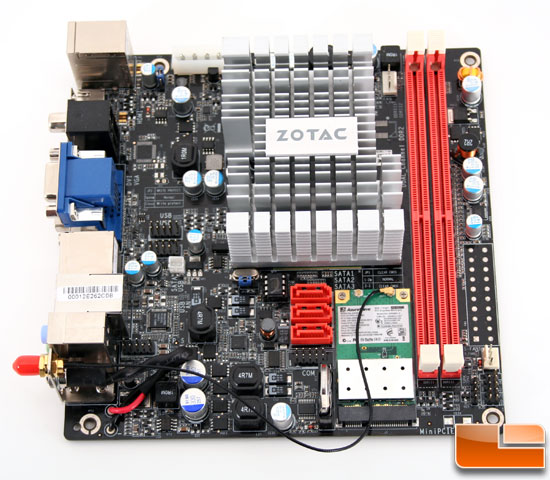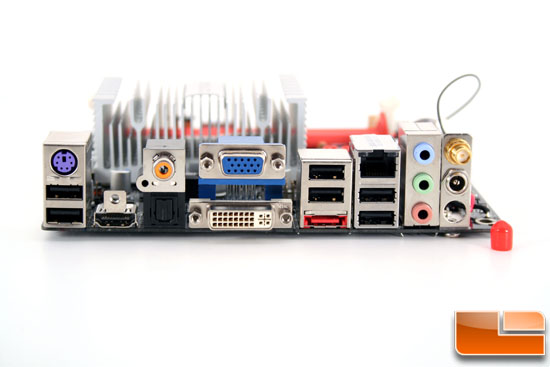Zotac IONITX-A-U Mini-ITX Ion Motherboard
Thoughts and Conclusions!
After the gauntlet of tests, what haven’t I mentioned? How about the energy consumption? The Zotac IONITX-A-U is supposed to be a low power board, so it shouldn’t be too much of a surprise to find out the average power consumption hovered at approximately 28 Watts, jumping up to 36 Watts only while performing intensive 3D graphics tests that utilized both the full power of the CPU and the graphics platform. The highest power consumption occurred right at boot up; while the hard drive was spinning up, power consumption hiked up to 41 Watts. Keep in mind that this is with one hard drive, not including the monitor. Also keep in mind that a 40 Watt light bulb is too dim to be useful.
There’s also the myriad of subjective feelings I had while performing the tests, concerning such issues as how “zippy” Windows 7 felt, how fast web pages rendered, and how Blu-ray and high definition playback went. I’m certain everyone will be happy to hear that Windows 7 felt as smooth as if I weren’t on a low-power Mini-ITX motherboard. In fact, I was impressed with its performance; web pages seemed to render faster than on my main computer running Windows Vista. While it might have more to do with differences in Windows 7 and Windows Vista, it suffices to say that the IONITX-A-U is in a good position to move forward with future operating systems.
Lastly, and most importantly, I rigged up the IONITX-A-U to a Blu-ray drive, with an HDMI interface to my HDTV and a digital optical cable running to my surround speaker system, and used Cyberlink’s PowerDVD 9 to start up a movie. Did it play well? Oh, yes, yes it did. Admirably so, as there was zero HDMI or audio configuration, sounding excellent with a great Blu-ray picture. Also, playing Blu-ray video didn’t pause or skip at all, and after a small buffer period was just as if I were watching on a dedicated Blu-ray device. Continuing to impress, I found that Windows 7 still responded quickly to actions even while the Blu-ray movie was playing, showing that Zotac’s IONITX-A-U was fully capable of handling high definition content with plenty of power to spare.
In all, Zotac’s IONITX-A-U Mini-ITX motherboard stood up to a battery of tests and proved itself fully capable of all it promised, from its HDMI output and high definition audio to its built-in 802.11n wireless card and low-power. In almost all benchmarks, the Intel ATOM N330 and NVIDIA ION based motherboard stood head and shoulders above mobile variations of similar configurations. Provided with two sticks of RAM, I think the motherboard would continue to show improvements in all benchmarks, and the ability to overclock the motherboard offers an even more substantial boost in performance. Costing around $179.99, this motherboard is well priced to serve as the ultimate core of a versatile and efficient HTPC.
Legit Bottom Line: The IONITX-A-U Mini-ITX motherboard by Zotac proved to be an outstanding example of the small form factor as it performed admirably in every test, subjective and objective, and offered every feature necessary to form the center of an excellent HTPC.



Comments are closed.